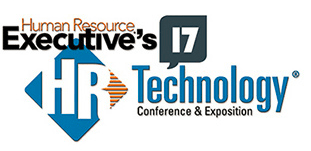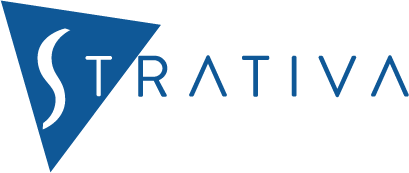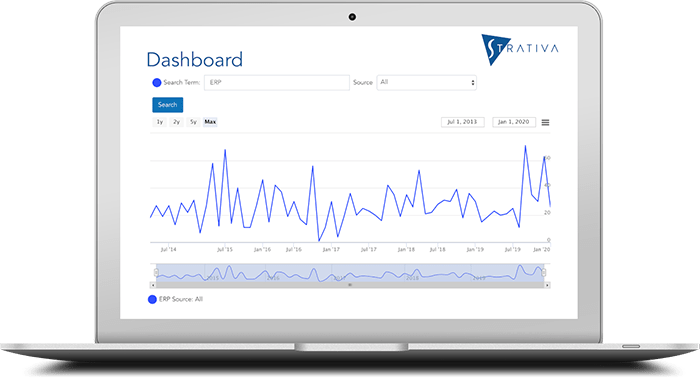
Human capital management (HCM) is a hot area for new technology, at least based on the number of new vendor offerings. Why then has there not been greater adoption of the technology by HR practitioners? This post outlines three reasons why interest is high but adoption slow, and discusses what business leaders should do about it.
First, here is a quick overview of the leading conference on HR technology, which we attended this year.
HR Tech Conference, a Must-Attend Event
The HR Technology® Conference (HR Tech) belongs on the calendar of anyone interested in HR technology. Here are the reasons:
- Thought leadership. Anyone and everyone associated with HR technology is at this conference—vendors, service providers, and HR professionals. This allows the conference organizers to select the best speakers and hold them to topics of high interest to attendees. Speakers go beyond traditional themes such as HR administration and compliance. Even cloud computing is old news to this crowd, as nearly all the leading HCM solutions these days are delivered as a service. This year, analytics was a hot topic, including predictive analytics, big data, machine learning, and employee sentiment analysis. Social business was another focus, as HR applications have turned out to be an excellent use case for social tools in recruiting, learning, and collaboration. The latest thinking around talent management was also on display.
- Peer networking. HR Tech is an HR vendor expo as well as a conference for HR professionals, so of course there is a large exhibit hall and plenty of sponsor logos plastered everywhere. But end users form a high percentage of the attendees. This creates excellent opportunities for peer networking, more so than is seen in most single-vendor conferences.
- Customer stories. Although vendors pay to exhibit, it does not entitle them to speaker slots, unlike the practice with many trade shows. When vendors do speak, it has to be with a customer, never alone. As a result, many sessions are devoted to case studies, and there are many customer panels. This year there were presentations and panel discussions by HR practitioners from a diverse collection of organizations, from traditional companies such as ConAgra, Monsanto, Bristol-Myers Squibb, Unilever, Siemens, Lockheed Martin, and HP, to digital businesses such as Facebook, Google, LinkedIn, and Hootsuite.
HR is fertile ground for new technologies, from social recruiting to sentiment analysis to wearables. But can HR organizations even begin to consume it all? This is where there is a gap between what is possible and what is currently realized in practice.
Workforce Analytics Illustrates the Problem
The adoption rate for workforce analytics is a good example. In one session, Brian Kelly, a former practice leader at Mercer, gave a presentation on strategic workforce planning. It is a hot topic, as it enables organizations to address gaps between current workforce characteristics and future workforce needs. In some industries, this is a critical process, as future workforce needs are changing with evolving business models and new products and services. High tech and health care are two sectors that come to mind. The good news, according to Kelly, is that most organizations already have the raw data needed to do strategic workforce planning, such as basic employee census data, high-level job families and critical jobs, reporting hierarchy, rewards data, and employee demographics.
But as Bill Kutik, the former HR Tech co-chair, points out in his excellent post-conference wrap up, HR consultants, analysts, and marketers have been saying as far back as 2001 that workforce analytics will be the next big thing. “Certainly interest is very high now in workforce analytics, but still without widespread adoption,” Kutik writes. “So I find it ironic (but typical) that vendors are so focused on predicting the future when their customers don’t yet have a firm handle on measuring the past.”
We have to ask, if technologies such as workforce analytics are critical to the mission of HR organizations, why is there not greater adoption?
Based on our consulting experience at Strativa, we see three basic problems.
- HR viewed as a support role. Despite claims that “our people are our strategic advantage,” most companies do not view HR as a strategic function. In practice, it is a support role, focused around the basic day-to-day activities of hiring and on-boarding new employees, paying them, administering their benefits, maintaining accurate records, and keeping the organization in compliance with labor law and myriad other regulations. If the senior HR leader is in the room for strategic planning sessions, it is often as a token gesture, to keep him or her informed of corporate strategy, not as a co-equal partner with functions such as product development, marketing, operations, finance, or sales. Too often, HR in many organizations is like the typical IT functions—it is there to support the strategy, not to help formulate it.
- Inadequate staff levels. Second, if HR is viewed as a support function, it is a ripe target for staff reductions. With the thinning of management ranks over the past twenty years, and especially since the 2008 recession, HR professionals are spread thin. When there are not enough hours in the day to deliver both the strategic and the tactical, the tactical always wins. Failing to think strategically is seldom a career-ending move, but falling out of compliance with labor law can give an HR director a quick escort out the door.
- Lacking necessary skills. Finally, most HR professionals do not have the quantitative skills to make use of new technologies such as workforce analytics. As Kelly points out, simple tools such as Excel may be sufficient for planning headcount by job function and geography. But more sophisticated analytical tools are needed to correlate projections of workforce skills, attrition rates, pay growth, diversity analytics, and external labor market data. Unfortunately, most HR professionals lack the skills to make use of these tools. HR has always been a career that is more attractive to liberal arts graduates, such as those majoring in psychology, sociology, and communications, rather than those with science and math degrees where they develop the quantitative analytical skills needed to make use of these tools.
One independent analyst, Brian Sommer, made similar observations in his blog post, The Problem is HR, Not HR Technology, after attending the conference. He writes:
“HR departments are chock full of great HR transaction folks. Likewise, they have great recruiters, compliance people and more in these groups. However, is there anyone who understands data analysis, external/Big Data, etc.?
Where are the quants in HR? Where are the statistics and math majors? Where are the social scientists who understand human behavior? Seriously, giving powerful analytic tools to many HR folks today (who lack awareness or skills in these technologies and disciplines) is like giving a chainsaw to a 4-year old. If they ever got it running, you’d have a bloody mess on your hands. If you don’t know the difference between causality and correlation, you have no business playing with analytics.
A rebalancing of the talent within HR organizations is needed today. New skills, capabilities and insights are needed to make HR more relevant and able to exploit today’s new HR technologies.”
Ironically, then, HR has its own talent management problem.
HR Organizational Readiness Is the Key Need
If an organization’s people are indeed its strategic advantage, then HR technology should have a prominent position in any organization’s IT strategy. However, most HR groups are not ready to adopt the latest HR technologies. Business leaders, therefore, should focus on developing their HR organizations as well as implementing HR technology.
For some organizations, this means changing their view of HR, from a support function to a co-equal role in business strategy. It also means reversing some of the staff cutbacks that were put in place during the recession. Finally, it means doing something about the skills gap in HR. In many cases, this will mean reaching outside of the traditional candidate pool to find new talent with the quantitative skills needed to effectively use emerging solutions for workforce analytics and other new HR technologies.

